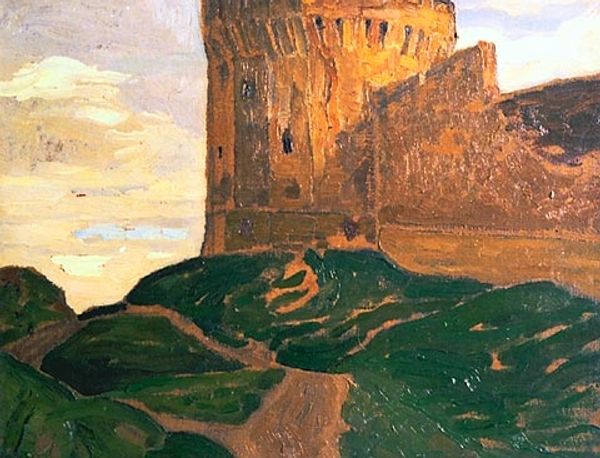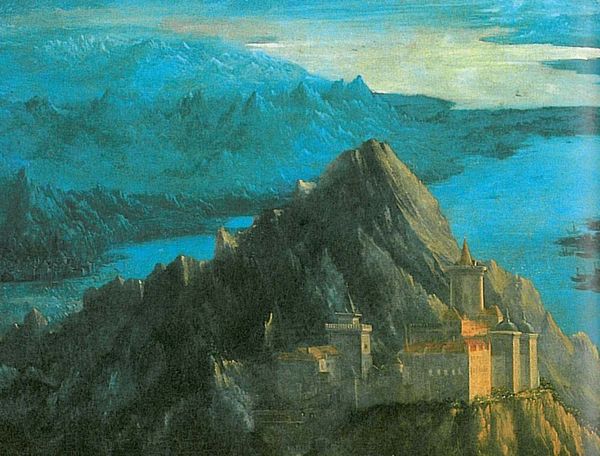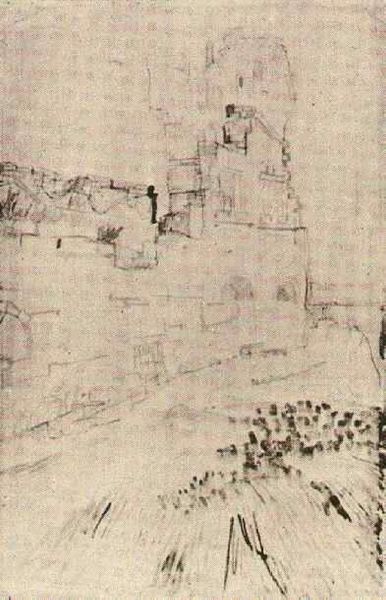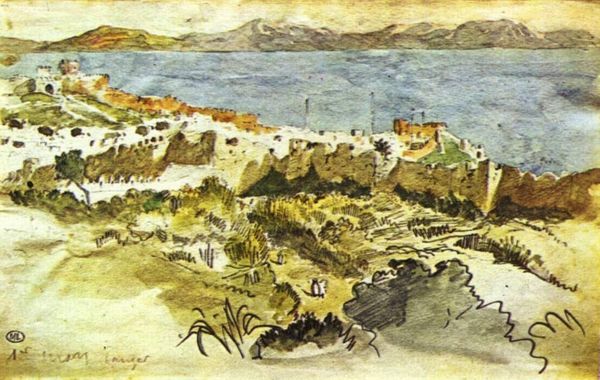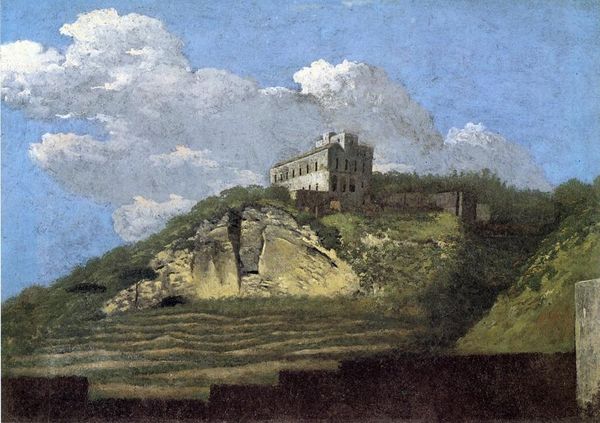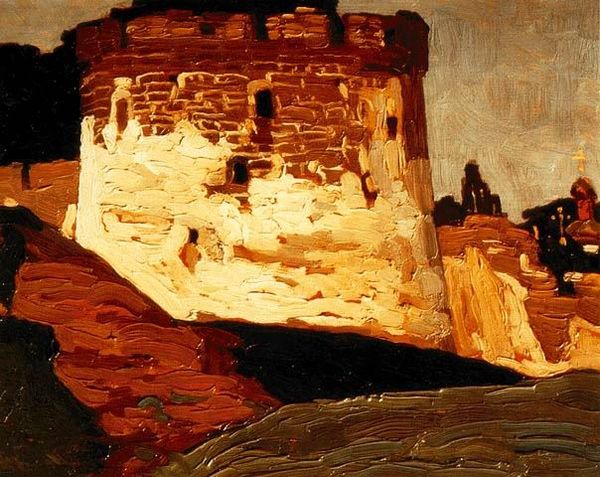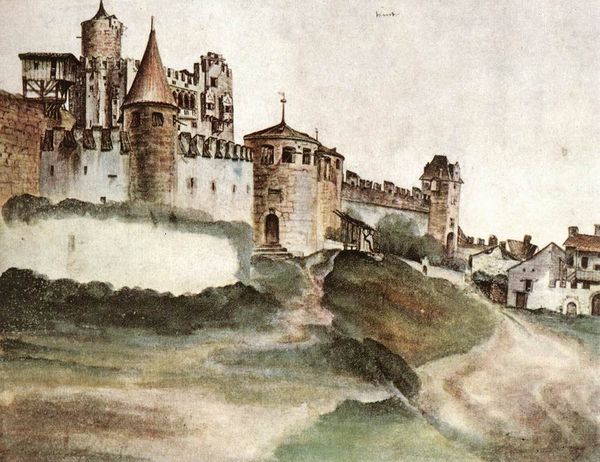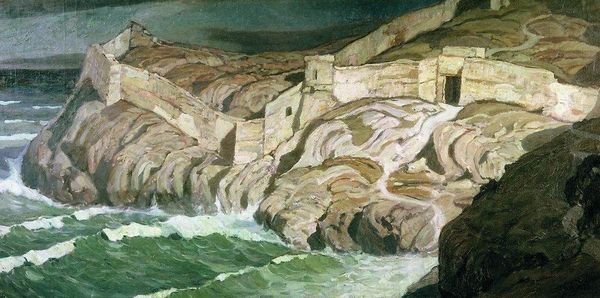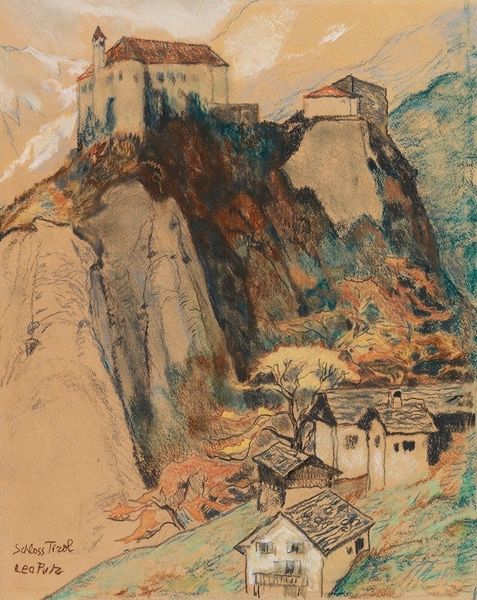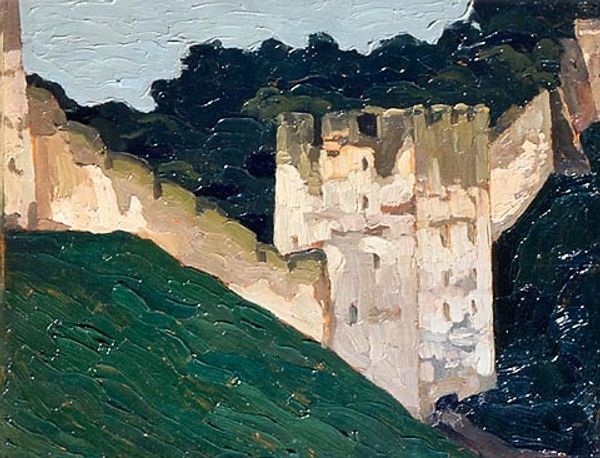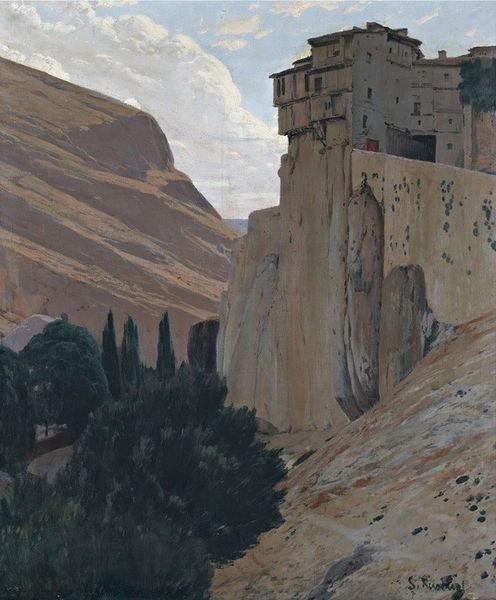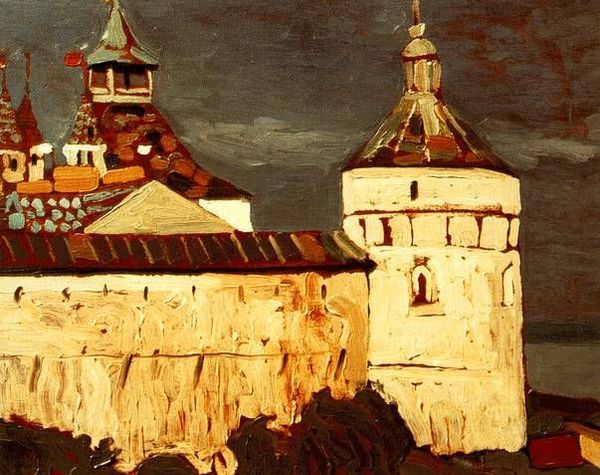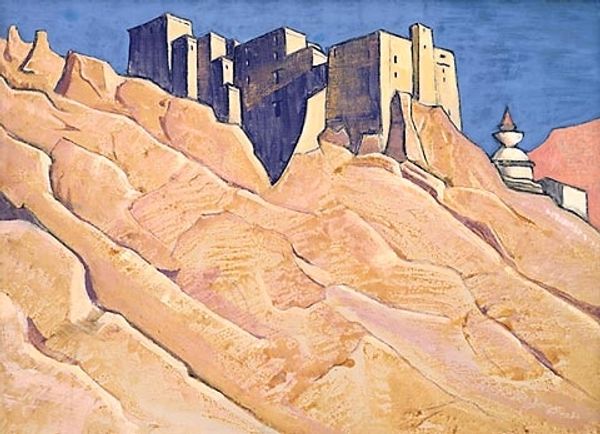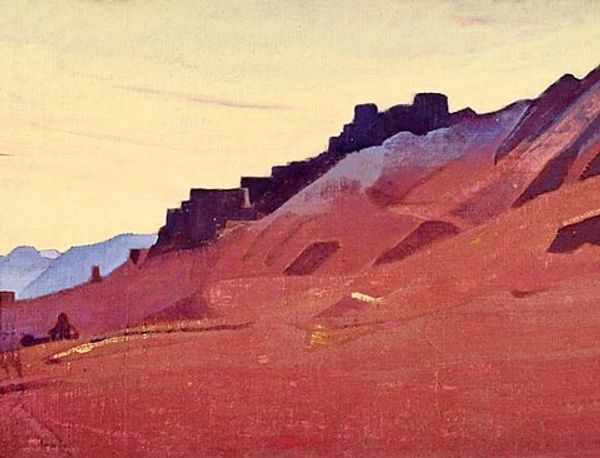
painting, oil-paint
#
painting
#
oil-paint
#
landscape
#
oil painting
#
symbolism
#
russian-avant-garde
#
cityscape
Copyright: Public domain
Editor: We’re looking at “Walls of Kremlin in Novgorod” by Nicholas Roerich, an oil painting from 1903. It’s dominated by earth tones and the looming structure of the fortress itself. There's a stark, almost melancholic feel. What strikes you about this piece? Curator: The Kremlin here is more than just architecture; it's a symbol imbued with Russian history and power, particularly in the early 20th century. This work reminds us that art is a powerful tool that often evokes a sense of national identity, but how is this image perceived beyond Russia's borders? Editor: That's a good question. Maybe a symbol of oppression to some? The way it looms definitely contributes to that feeling. It’s very imposing. Curator: Precisely. The painting's aesthetic choices--the simplified forms and earthy color palette--tie into a broader artistic trend, a search for national roots within the Russian avant-garde. Think about how the state sanctioned certain imagery. Were these artistic expressions controlled? Editor: I can imagine there were definitely boundaries. So even in its 'simplicity,' the artwork becomes a loaded visual statement within that political context? Curator: Exactly! Art rarely exists in a vacuum. This Kremlin isn't just stone and mortar; it is tied to power, identity, and control. Knowing the history allows us to see that tension, right? Editor: Definitely. I’m seeing this work with totally fresh eyes! Curator: That's the magic of understanding art as a product of its time. I think now, looking at this painting, its layers of cultural meaning stand out more. Editor: Absolutely. Thanks, that’s really opened it up for me.
Comments
No comments
Be the first to comment and join the conversation on the ultimate creative platform.
